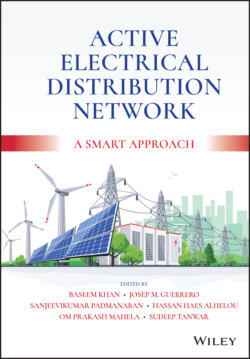Читать книгу Active Electrical Distribution Network - Группа авторов - Страница 21
1.3.4 Distribution Franchisee (DF) Model
ОглавлениеThis model is a hybrid arrangement between a concession and a management contract, which enables private players to carry out some power-related functions without letting the ownership of the distribution sector go to the private player. In the case of the DF model, a distribution licensee is legally allowed through the regulatory provisions to authorize a person/entity for electricity distribution in a specific area under its licensee area [9]. Table 1.1 shows the various forms of a DF model.
Table 1.1 Various forms of DF model.
| Franchisee model | Compensation | Area | Benefit to power sector |
|---|---|---|---|
| Outsourcing Outsourcing of some of the activities like billing and collection | Fixed fee | Rural | Improved operational efficiency |
| Collection-based revenue franchisee (CBRF) Allowed for billing and collection | Provisions for incentives and penalties based on collection while ensuring fixed percentage of collection toward compensation of labor used | Rural | Improved operational and collection efficiency |
| Revenue collection with O&M Operation and maintenance related responsibilities in addition to billing and collection | Fixed fee and incentive | Rural | Improved operational and collection efficiency Reduction in manpower |
| Input-based distribution franchisee (IBDF) Perform the same tasks as that of a distribution licensee except it must buy electricity from the licensee at some predecided input rates | Right on revenue | Urban | Improved operational and collection efficiency Reduction in manpower and distribution losses Avoided investments |
These four DF models all have their own popularity. The selection of a particular model is highly dependent upon the area of its implementation. For example, in rural areas, meter reading and bill distribution using vending machines, revenue collection, etc., compels the involvement of the franchisee. For this purpose the franchisee is given to individuals, panchayatiraj (the local government in the Indian subcontinent) institutions, self-help groups (SHGs), non-governmental organizations (NGOs), or groups of customers. Thus the first three models of DF models are suitable for operations in rural areas. However, in the case of the IBDF, the operational area is mostly preferred to be the urban area and the franchisee is assigned to undertake the functions of operation and maintenance along with the above tasks. Beside these activities, a franchisee is also allowed to undertake capital expenditure (CAPEX) for its allowed area. In the case of an IBDF franchisee scheme, the franchisee has to buy electricity from the distribution licensee at some predefined input rates, which are decided based on a competitive bidding process. Figure 1.4 shows the structure of an input-based distribution franchisee (IBDF) model.
Figure 1.4 Input-based franchisee model.
Again, the input rate is decided by the licensee based on a loss reduction trajectory. As the tariff is the imposed control on a franchisee to reduce AT&C losses, the main objective of the franchisee is to reduce AT&C losses in its network. Thus the profit label of the franchisee totally depends upon its performance toward reducing losses as framed in a performance-based multiyear tariff framework. If the franchisee is not able to achieve the targeted loss reduction, it is also penalized and suffers from the loss. As a result, the primary focus of the DF model has shifted toward loss reduction. The DF model has tremendous potential toward reducing losses, improving collection efficiencies, and is synonymous with a privately owned DISCOM. Because of these features, this model has attracted lot of interest by various utilities. Involvement of private companies reduces the political interference and ensures adequate private capital investment. The relative concerns with this model involve:
The takeover time is too long as the transition of asset and manpower requires an audit.
Bid norms are such that only big players get a chance and therefore bidding is very restrictive: bidding talent becomes a problem.
After a takeover, the focus of the DF shifts toward operations and asset management, thus neglecting the prime focus of loss reduction.
Loss handling is weakly addressed as operation and maintenance supersede the loss handling system and method.
Power management status is very poor as the DF is not allowed for market participation.
Investment toward system up-gradation and augmentation related works are poor due to lack of availability of sufficient capitals.
Investment needed for implementations, technologies, and innovations is missing because of the unavailability of adequate capital.
Capital mobilization toward renovation and modernization works are not sufficient.
DF is not able to ensure sufficient capital mobilization toward physical structure development and future investment because the tariff is not within its control.
